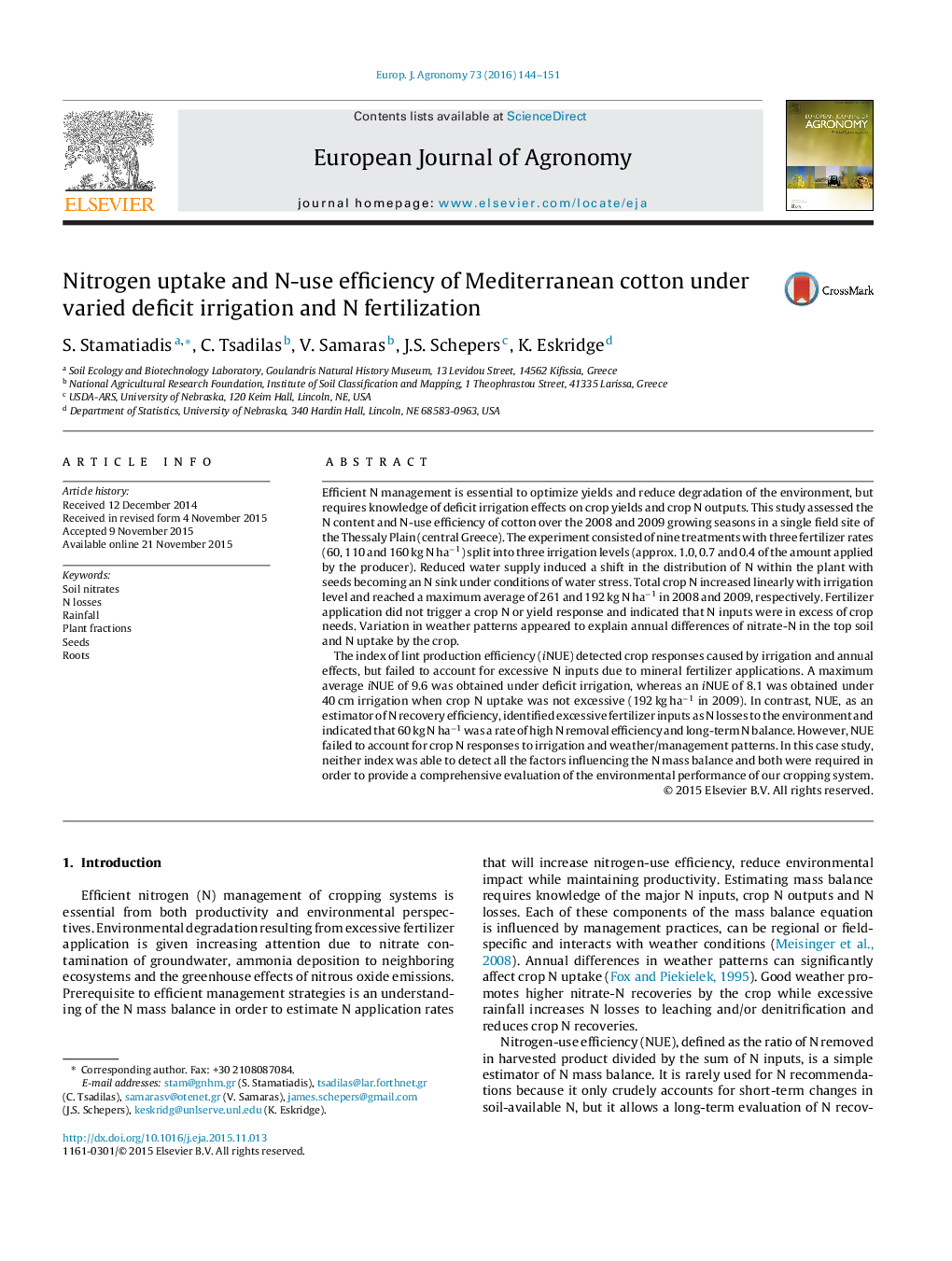| Article ID | Journal | Published Year | Pages | File Type |
|---|---|---|---|---|
| 4508810 | European Journal of Agronomy | 2016 | 8 Pages |
•Crop N varied with irrigation level and growing season, but not with mineral N inputs.•Deficit irrigation shifted the distribution of plant N with seeds becoming an N sink.•The internal NUE detected crop responses caused by irrigation and annual effects.•N recovery efficiency identified excessive N inputs as losses to the environment.•Neither index was able to detect all the factors influencing the crop N mass balance.
Efficient N management is essential to optimize yields and reduce degradation of the environment, but requires knowledge of deficit irrigation effects on crop yields and crop N outputs. This study assessed the N content and N-use efficiency of cotton over the 2008 and 2009 growing seasons in a single field site of the Thessaly Plain (central Greece). The experiment consisted of nine treatments with three fertilizer rates (60, 110 and 160 kg N ha−1) split into three irrigation levels (approx. 1.0, 0.7 and 0.4 of the amount applied by the producer). Reduced water supply induced a shift in the distribution of N within the plant with seeds becoming an N sink under conditions of water stress. Total crop N increased linearly with irrigation level and reached a maximum average of 261 and 192 kg N ha−1 in 2008 and 2009, respectively. Fertilizer application did not trigger a crop N or yield response and indicated that N inputs were in excess of crop needs. Variation in weather patterns appeared to explain annual differences of nitrate-N in the top soil and N uptake by the crop.The index of lint production efficiency (iNUE) detected crop responses caused by irrigation and annual effects, but failed to account for excessive N inputs due to mineral fertilizer applications. A maximum average iNUE of 9.6 was obtained under deficit irrigation, whereas an iNUE of 8.1 was obtained under 40 cm irrigation when crop N uptake was not excessive (192 kg ha−1 in 2009). In contrast, NUE, as an estimator of N recovery efficiency, identified excessive fertilizer inputs as N losses to the environment and indicated that 60 kg N ha−1 was a rate of high N removal efficiency and long-term N balance. However, NUE failed to account for crop N responses to irrigation and weather/management patterns. In this case study, neither index was able to detect all the factors influencing the N mass balance and both were required in order to provide a comprehensive evaluation of the environmental performance of our cropping system.
